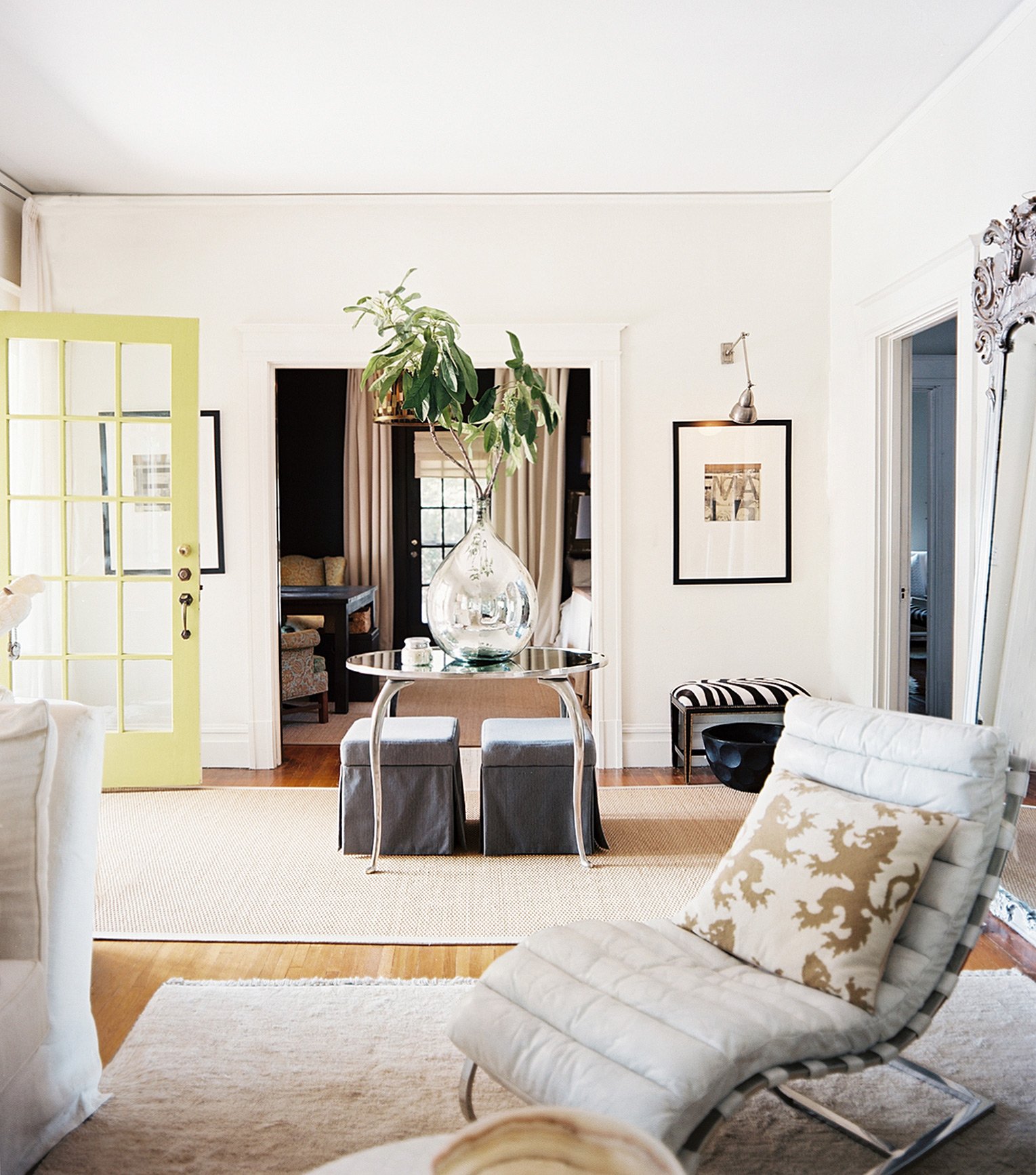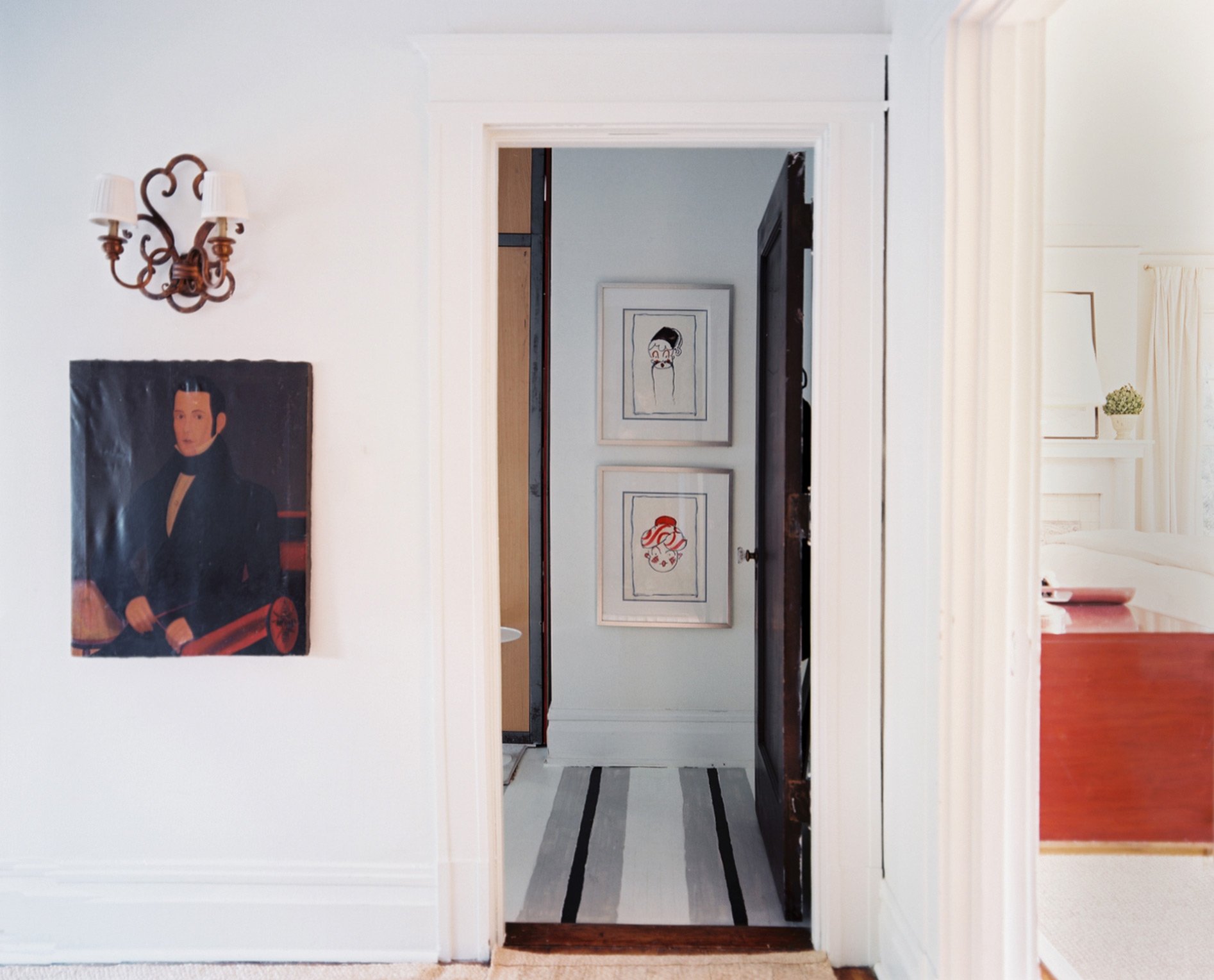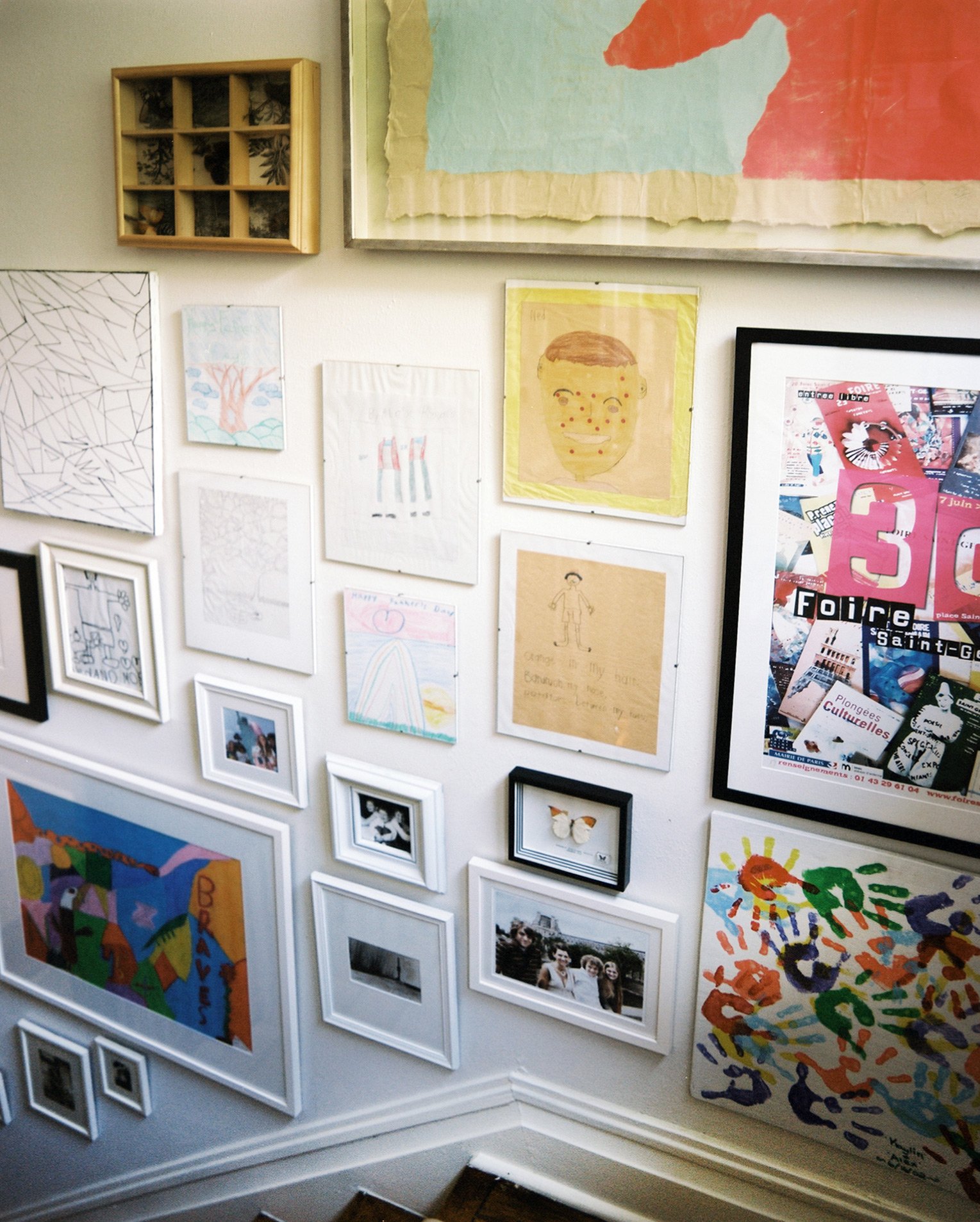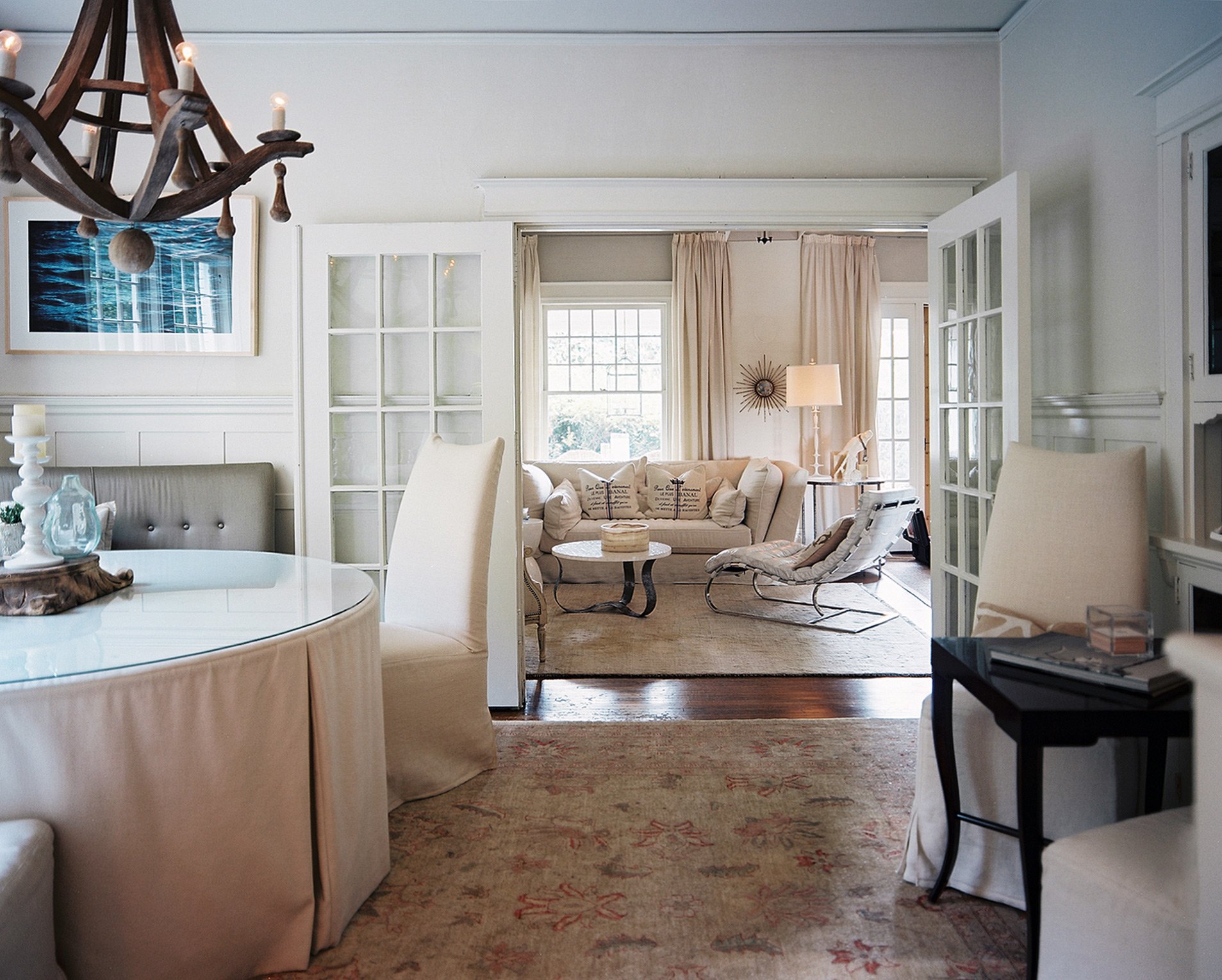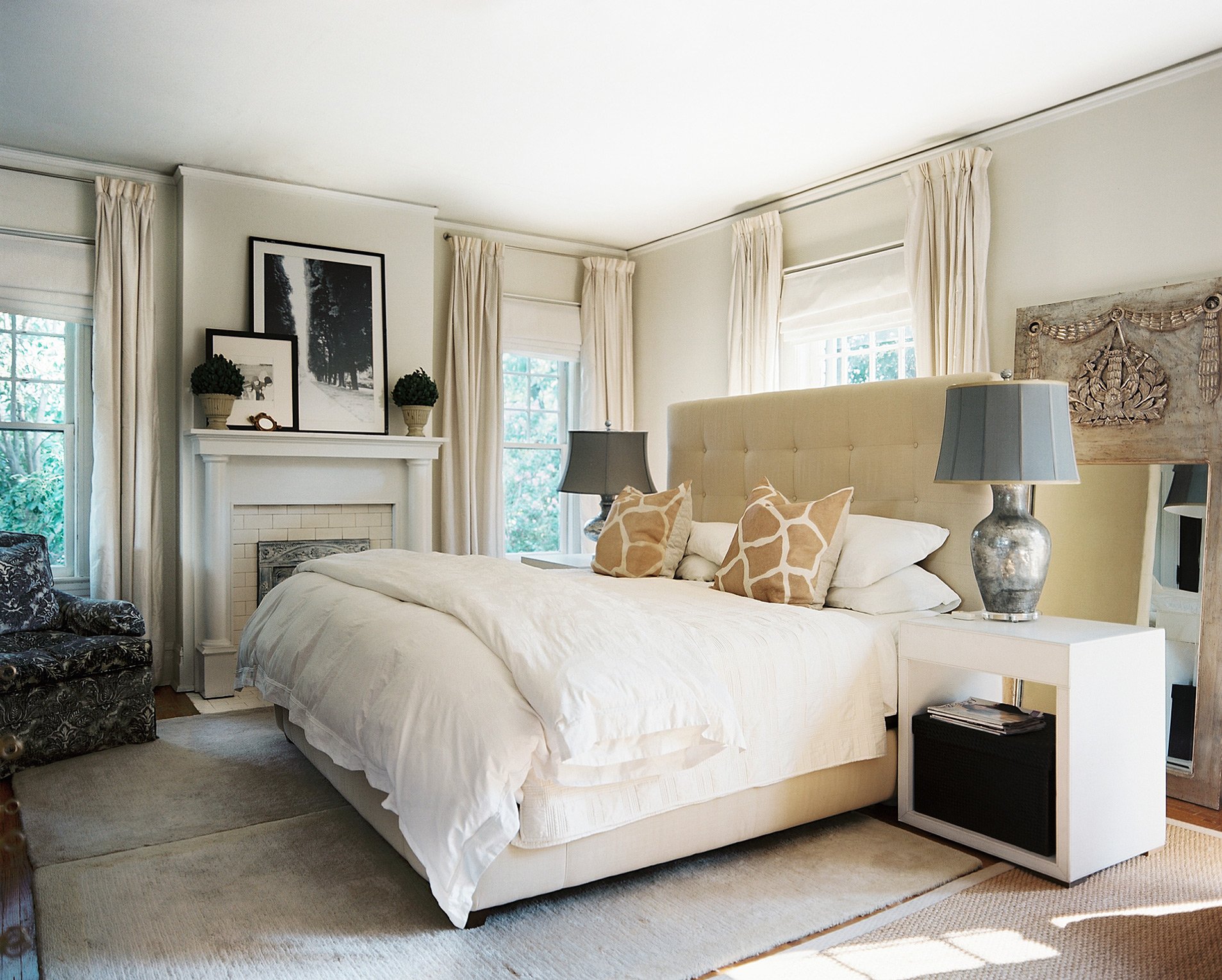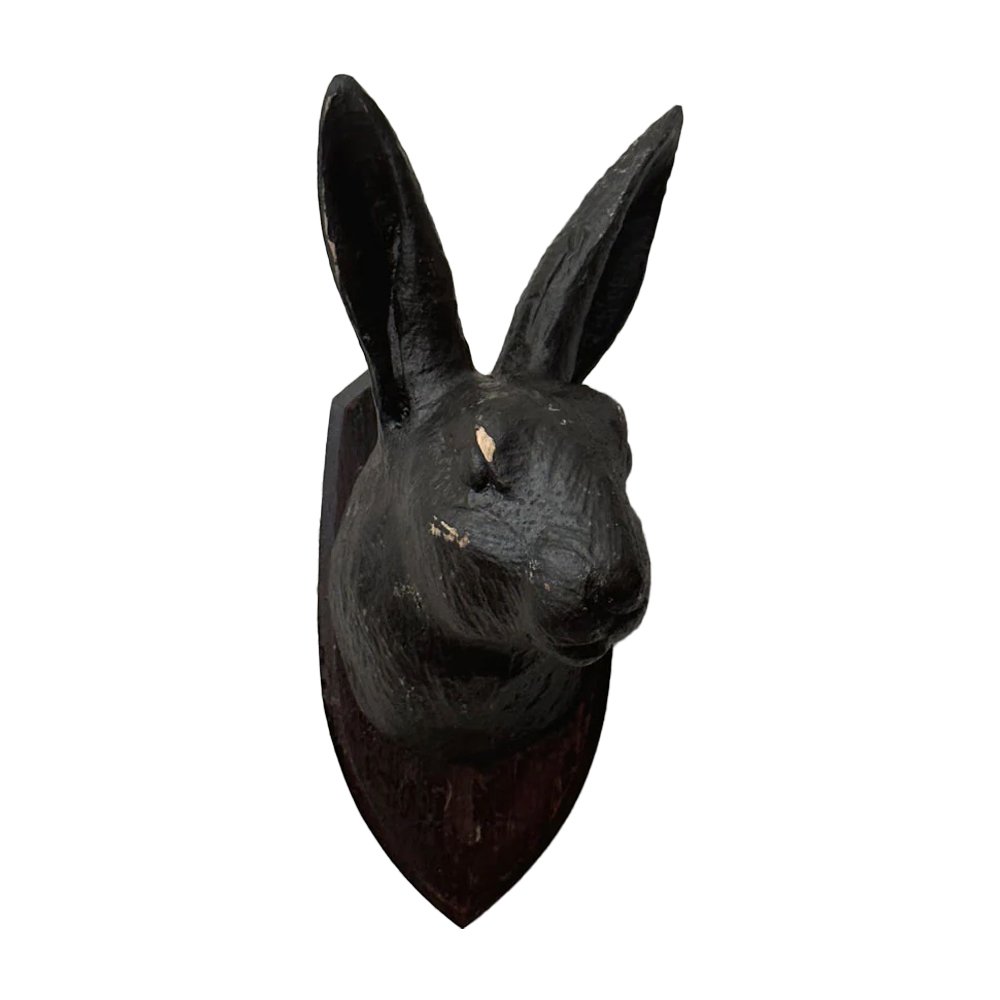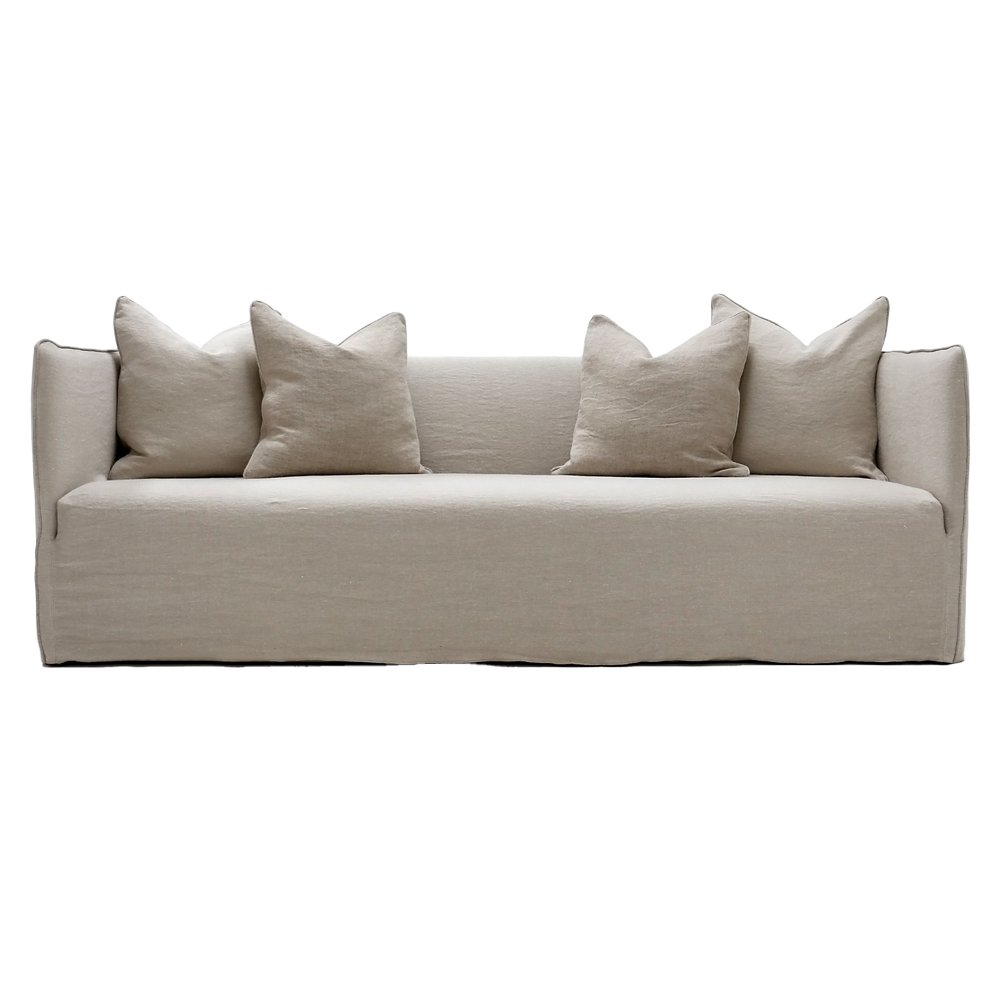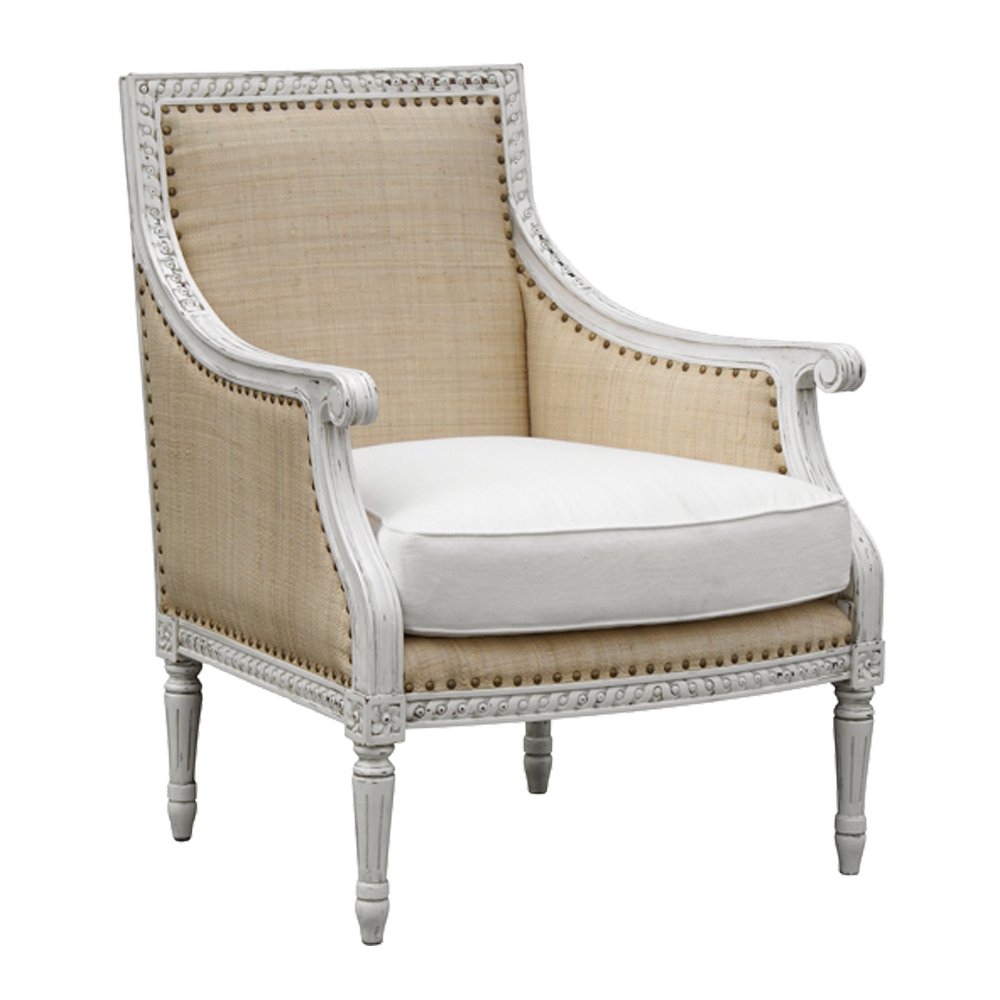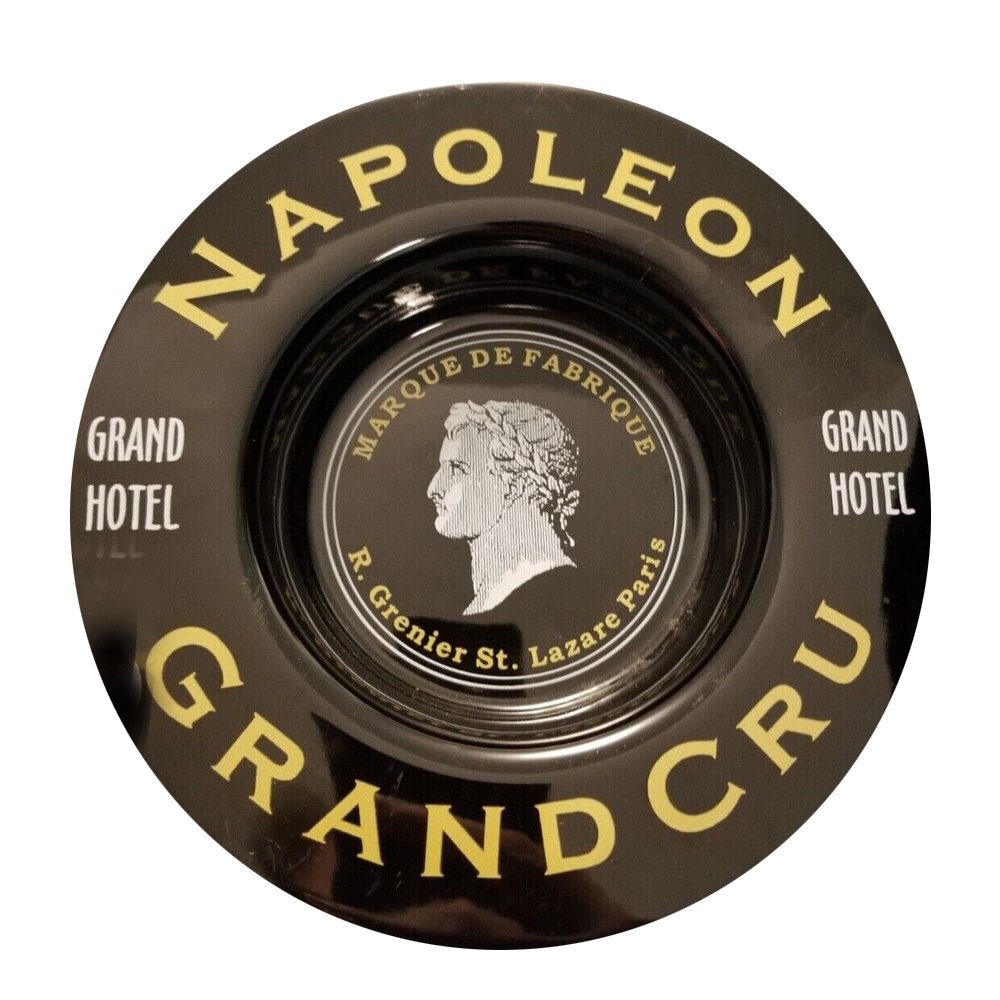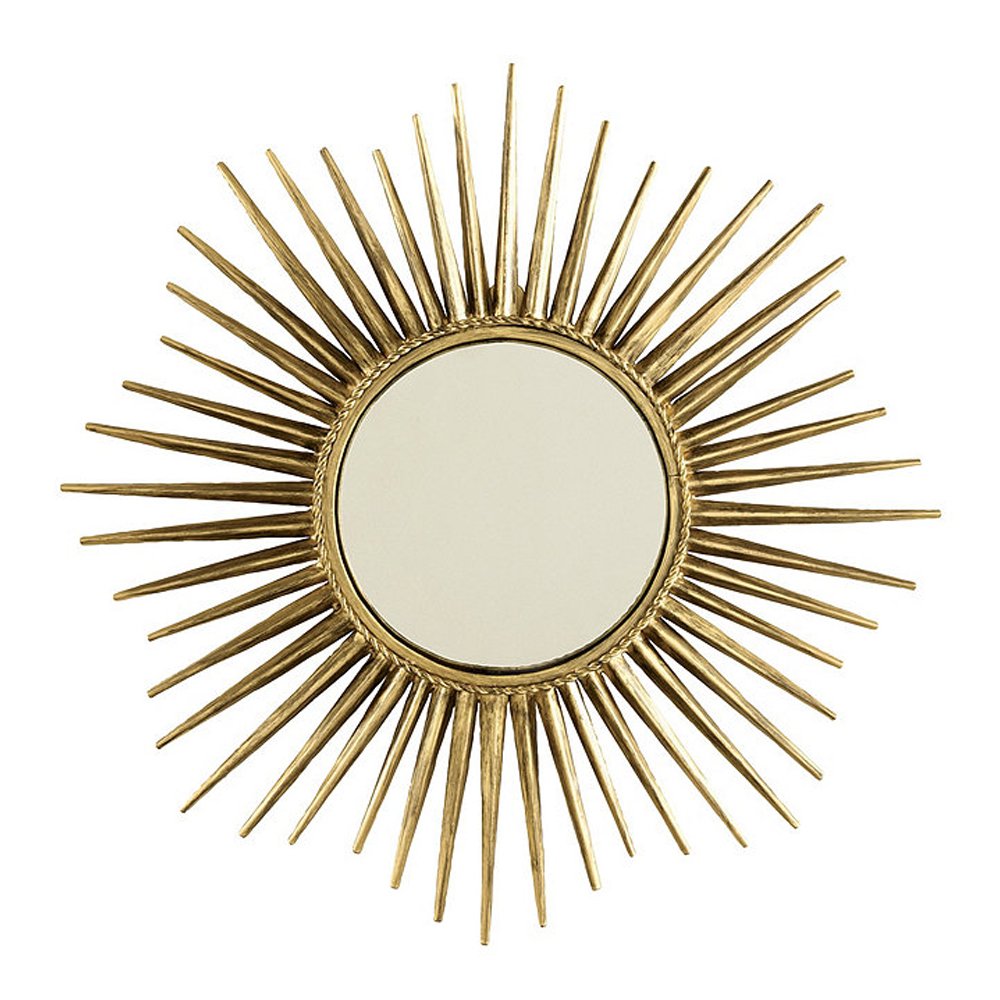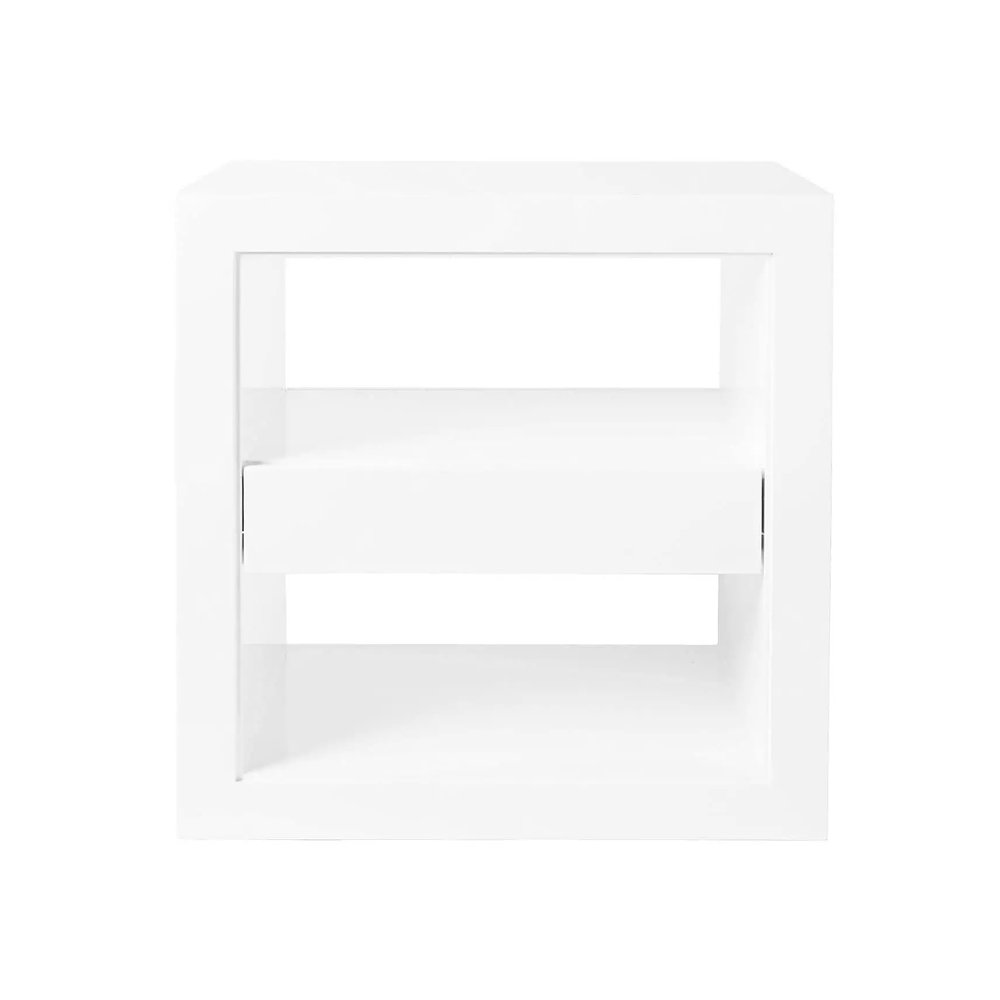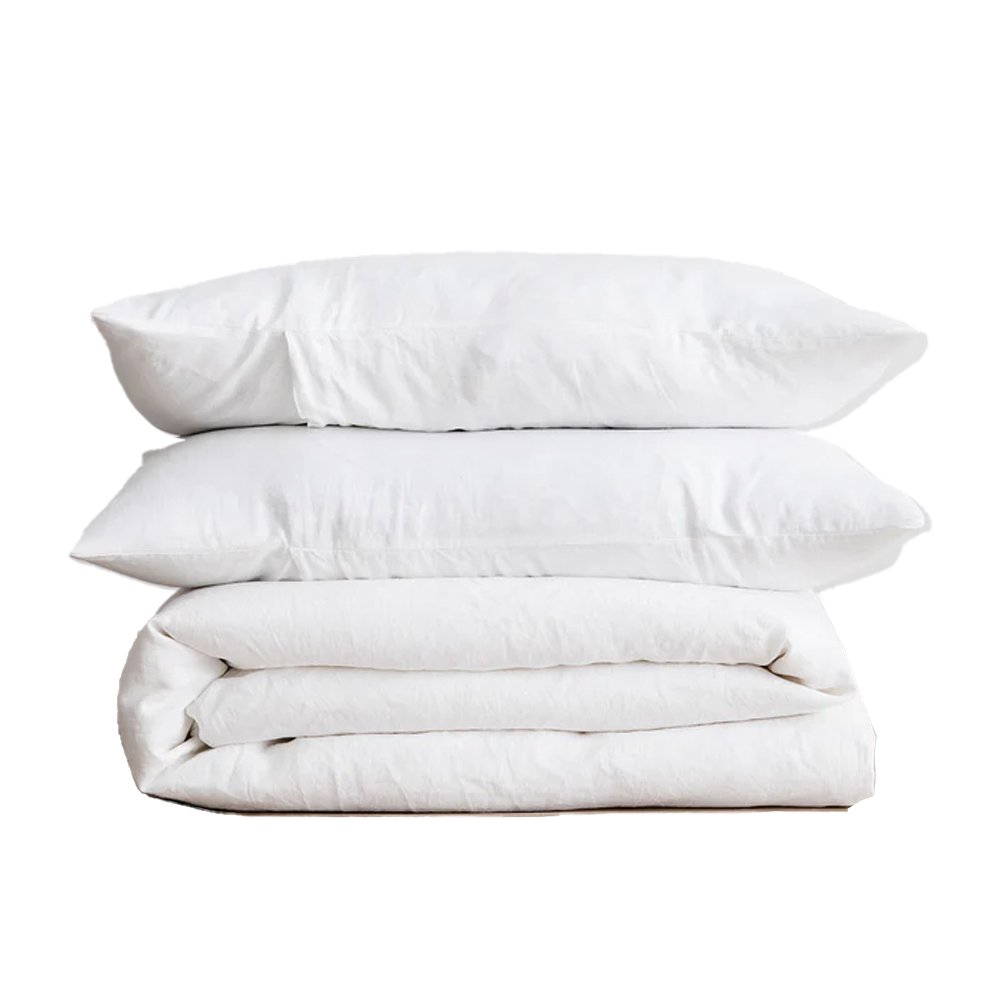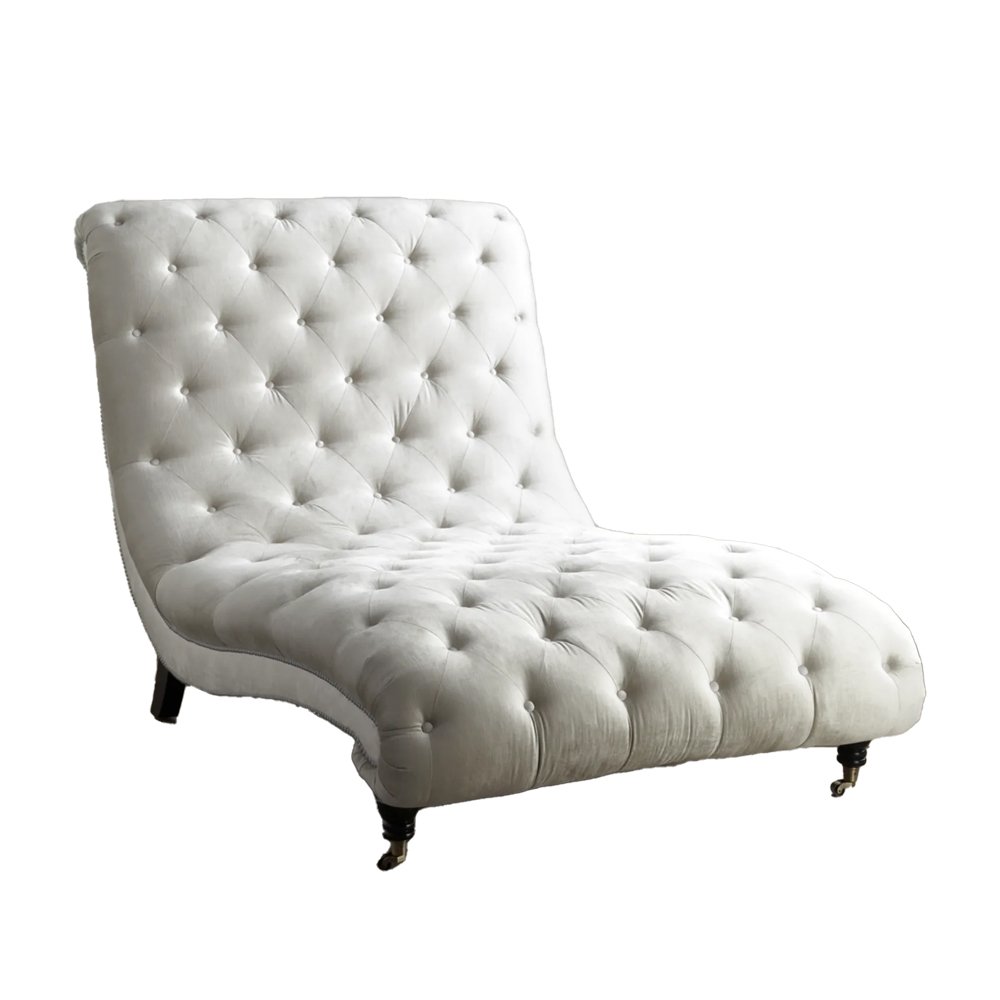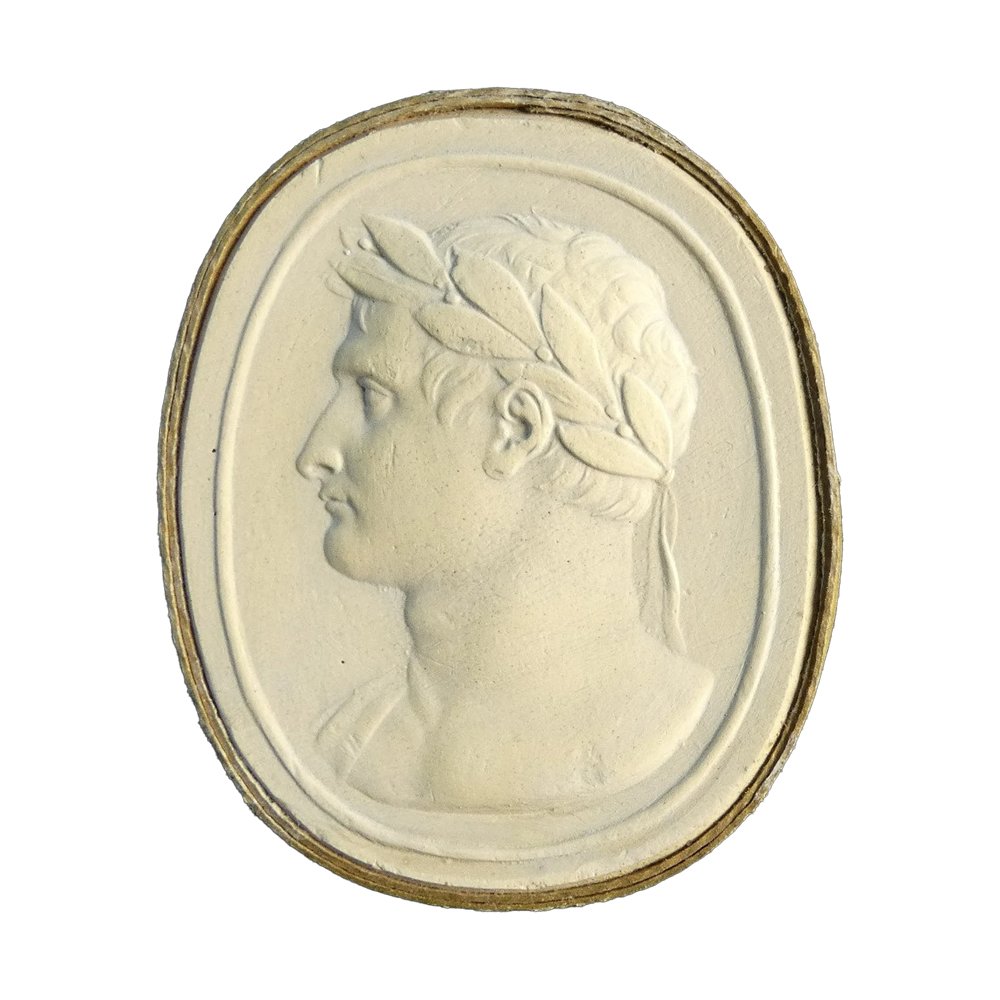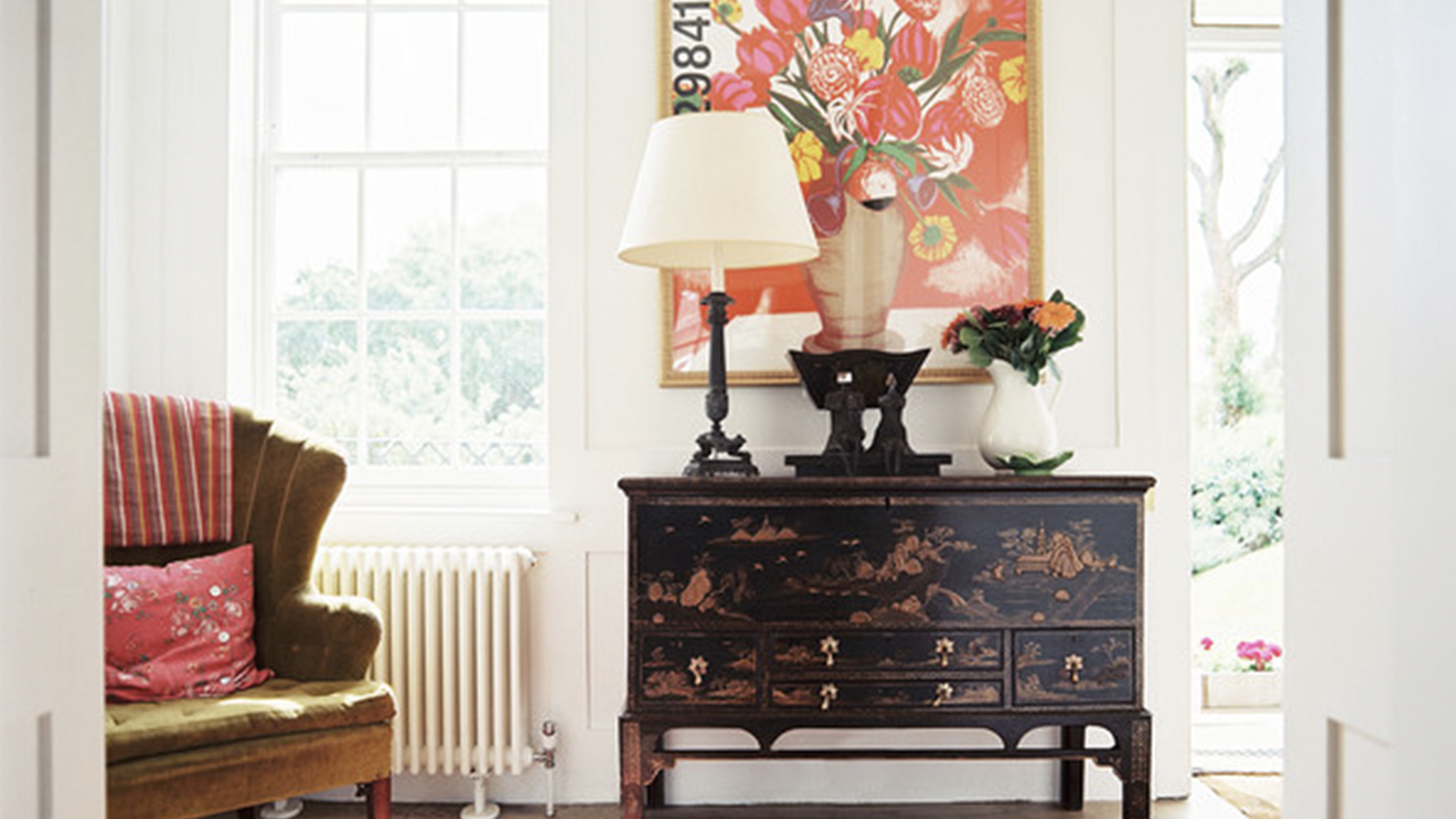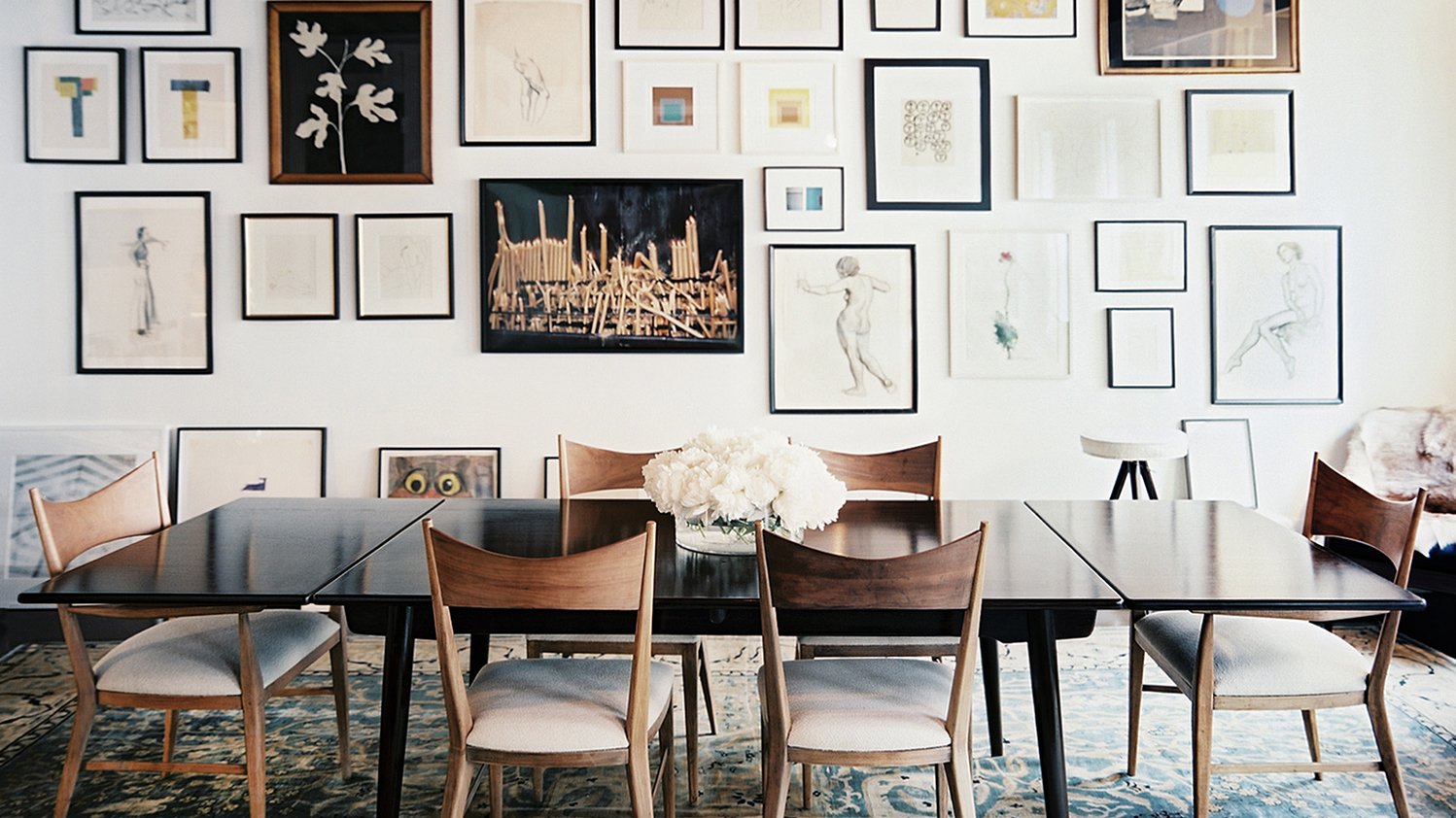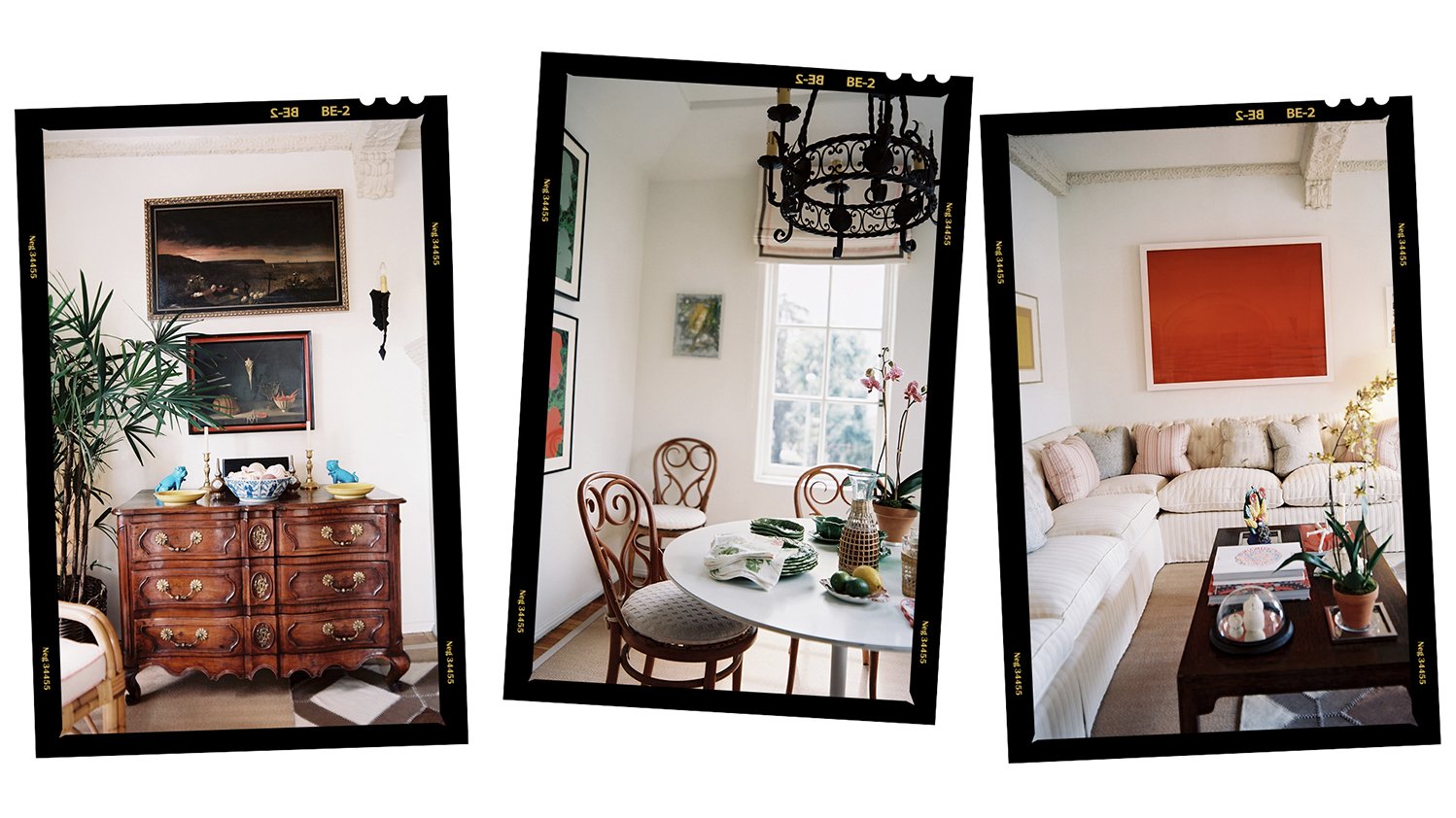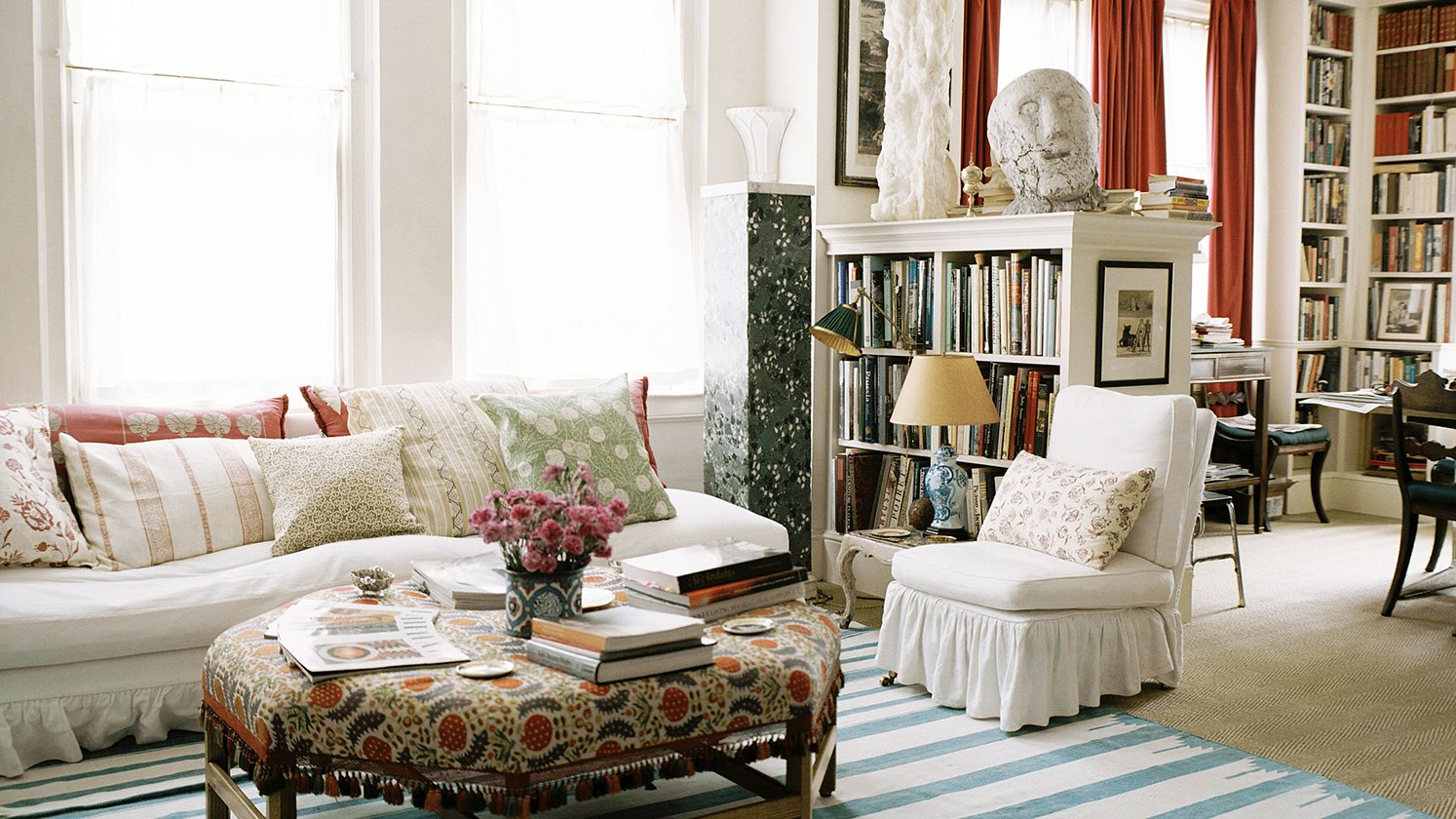Quiet Neutrals: At Home with Lisa Sherry

Written by Shawn Gauthier | Photographed by Patrick Cline | Produced and Art Directed by Michelle Adams
From Our Archives
Designer Lisa Sherry transforms her 1920s North Carolina home with a neutral palette and a sense of humor.
The house is located on a busy street, so Sherry created a privacy wall in the front yard by planting a bank of Leyland Cypress trees. “We wanted a European courtyard feel,” she says. “It’s our own little secret garden.”
Ordinarily, designer Lisa Sherry transforms interiors into luxe, livable spaces tailored to suit her clients’ tastes. But when it came time to decorate her own home, she seized the opportunity to create her dream. “The only rules I had to follow were dictated by the architecture, and even those I tweaked,” says Sherry. “I was free to pursue what I loved.”
Renovating the High Point, North Carolina, residence was a labor of love. When Sherry purchased the 1922 home in 2001, it had sat abandoned for three years and appeared to be on the verge of collapse. “It was the worst house on the block,” says Sherry, “but we could see through the superficial signs of neglect to the essential elements that were still intact.”
It took seven months for the home to be fully restored. During the renovations, Sherry unearthed original architectural elements and decided on a neutral backdrop that creates a serene setting for the collections of rare objects and mementos she’s gathered during her travels around the world. Unexpected accents abound, revealing Sherry’s signature aesthetic: a Shriners hat sits atop a classical bust, while traditional prints hang from a hook on a glass shower stall. “When you collect things you adore, you often wonder how you’ll make sense of them,” says Sherry. “Once you do, they end up being the pieces that give your home life.”
The house is now a personality-packed retreat, the ideal place for a boisterous young family to relax. “Our family is busy,” says Sherry. “We needed a home where we could curl up and unwind. But it also had to reflect our personalities, and we love to have fun.”
Sherry covered the original tiled fireplace with drywall for a streamlined look. She found the framed pieces of art at antique shops and received the faux jackalope head at a white elephant party. “It was the gift everyone wanted,” she says, “so when I managed to get him, I wanted to display him prominently!”
“Stairwells are ideal places for displaying pieces of sentimental value,” says Sherry. “They’re more private.” A mixture of family photographs, mementos, and artwork lines the wall.
Sherry layered several shades of white in a variety of textures for a warm, welcoming environment in her living room. “People often think of neutral spaces as being cold or sterile,” she says. “But that’s not necessarily true, as long as you introduce the right amount of texture.”
“At-home bars are a must,” says Sherry. “Arrange all your items on a tray to keep them neat and organized.” To soften the bar’s utilitarian aspect, Sherry accessorized the sideboard with a vintage painting and vase of flowers.
Sherry displays souvenirs, such as this collection of coral and shells, throughout her home. “I use a Sharpie to write the date of the vacation on the back of each object,” she says. “There are literally piles of things everywhere.”
Chalkboard paint allows creative expression. “We considered filling the space with a headboard but knew chalkboard paint would be more fun,” says Sherry. “Plus, we can always draw a headboard with chalk!”
Taking advantage of a small alcove in the corner of her office, Sherry commissioned a custom-made bench to create a reading nook beneath the shelves.
The media room is the family hotspot. “It’s where we all hang out, eat dinner, and relax,” says Sherry.



